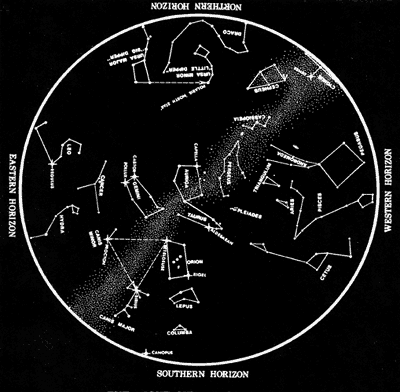By Janea Brown
Lifestyles Editor
Go outside, look up and find the brightest star. That star is over four light years away, and it’s the closest star to the earth. That means the light shining from the star is over four years old by the time it is visible to any stargazer.
The mysteries of the sky have intrigued humans for centuries, making stargazing a natural pasttime.
“Astronomy is the oldest science and one of the few that requires no tools other than your eyeballs,” astronomy professor Dr. David Green said.
Many people assume that you have to drive to a planetarium in order to see stars, but Malibu is a prime spot for stargazing because Pepperdine is located far enough away from L.A. city lights.
“In Malibu we are as about as dark as you can get in the L.A. cosmopolitan area,” Green said.
When city lights aren’t dimming the view, the naked eye can see about 3,000 stars. If you use binoculars that number skyrockets to 10,000 and with a telescope, you can see a million stars at one glance.
The earth is part of the Milky Way Galaxy, one of millions of galaxies in the universe. When everything is put into perspective, the earth is hardly even a speck in relation to the universe.
Few people take the time to ponder the universe because it can be overwhelming.
“People don’t look up and say ‘why,’ that’s why we need to do it,” Green said. “When you see the rings of Saturn through a telescope for the first time, if you don’t go ‘wow,’ you’re not wowable.”
On a clear night, the lack of Malibu lights make the rolling hills of Alumni Park the perfect place to get a good view of the night sky. The stars are best seen between 7 p.m. and 10 p.m.
“Dress warm, take a blanket, take snacks, take a friend, lie on your back in the grass and just watch,” Green said.
Another perfect place to stargaze is Corral Canyon, five minutes north of Pepperdine on Pacific Coast Highway.
Turn right onto Corral Canyon, navigate about five miles up the windy road, you will find a perfect view of the sky, but also a picturesque view of the city.
Students from Green’s astronomy class have had the opportunity to stargaze at Corral Canyon for their Tuesday night lab practicum.
“The reason that I took this class is because I wanted the hands-on experience of being able to go outside and see the stars for myself,” senior Kat Harpster said. “It’s awesome to be outdoors, even if it is freezing.”
But stars aren’t the only visible bodies in the sky. Planets and celestial events such eclipses and can be seen on rare occasions.
Witnessing an astronomical event like the meteor shower in November is not something that happens everyday. The shower lasted several nights. At one point observers could see anywhere from five to 10 shooting stars in one minute.
Green suggests that ambitious star-watchers invest in a planisphere, a map that will help to pick out some of the major constellations like Orion and Taurus.
“It’s compelling to know our place in the universe and where we are physically,” Green said. “Once you’ve mastered the constellations you can impress a friend or a date with your knowledge.”
Looking at the stars is not only a taste of the magnificence of the world, but of our history.
“You can see the same things that the ancient Babylonians and Assyrians saw,” Green said. “When we look at the sheer magnitude of the universe we are touching, seeing the face of God.”

Artwork by Aaron Kafka
JANUARY SKY: Navigating the sky can be simple with the right tool, a star chart of the sky. The chart guides viewers by mapping the position of constellations.
January 31, 2002

